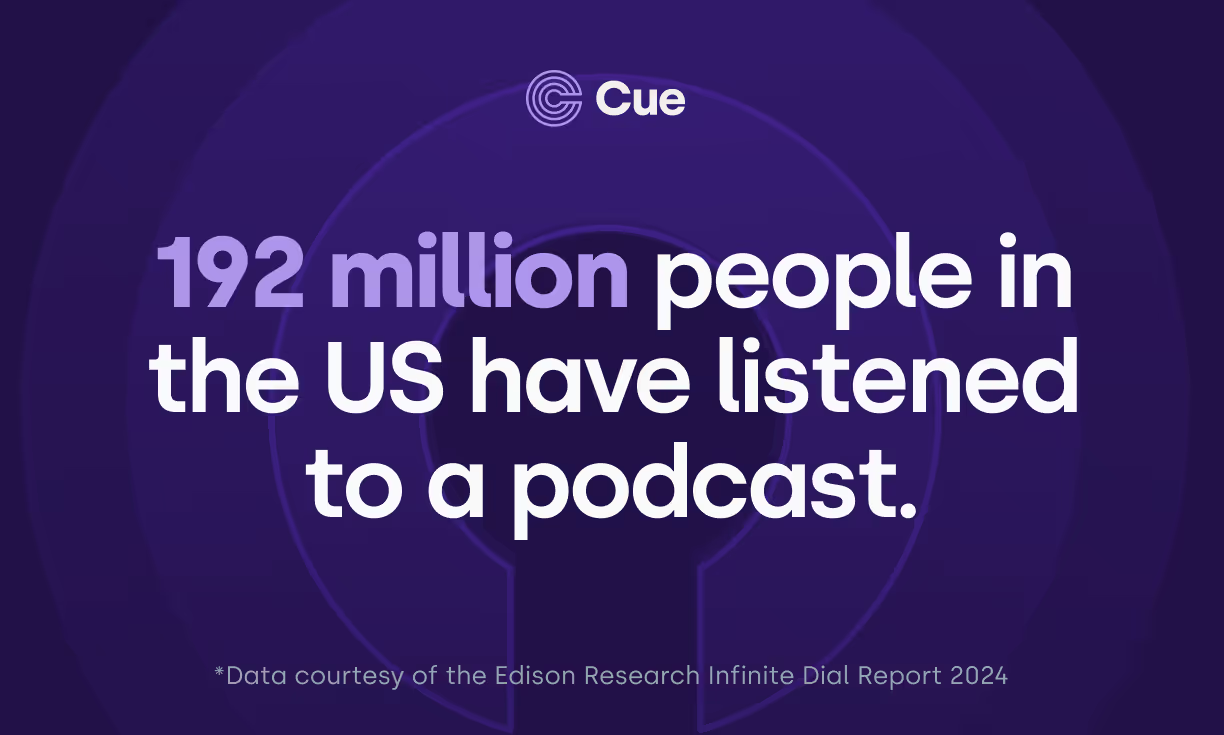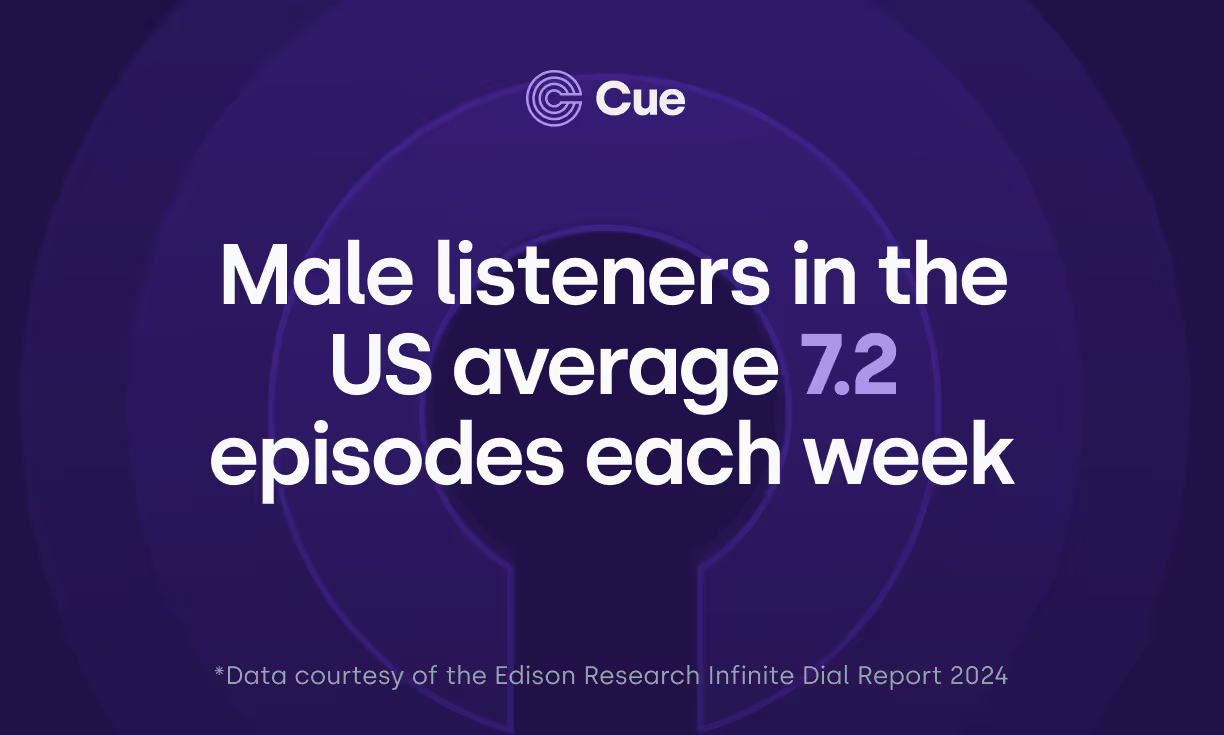
Let's Talk
Menu

In their infancy, podcasts were found in some small corners of the internet and available only to the tech-savvy.
But fast forward to 2024, they’re a major part of digital media and as ubiquitous as video, digital music, and websites. But how is the podcast industry faring? What trends are we currently seeing? In this article, we delve into the details of the industry with 9 key podcast statistics and trends you need to know in 2024.
Let’s get into it, shall we?
To spare you the effort of researching, we’ve collated 9 key podcast statistics and trends into this one handy list for you. Ready?
According to the podcast database, Listen Notes, there are currently over 3 million podcasts in existence. Other databases claim there are more, like Podcast Index’s 4 million. But these often aren’t podcasts people can properly listen to. They include deleted podcasts and ones that were created purely for testing RSS feeds. Or, ones without any actual audio and ones that only have machine-generated audio. Listen Notes has measures in place to filter these out, making their figure of 3 million podcasts the most accurate.

In 2023, there were almost 465 million podcast listeners worldwide, and this is set to grow to 505 million by the end of this year. In 2020, there were 332.2 million listeners. The number of podcasts and podcast listeners was boosted in 2020 and 2021 by the COVID-19 pandemic, as various lockdowns saw the world turn online for entertainment and information. But as the world returned to normality, podcast listening has still grown each year. Proving this is an ever-popular format.
In 2023, Edison reported 83% (237 million) of the US population knew what a podcast was, and 64% (or 183 million) had listened to a podcast at some point.
By contrast, Edison estimates this will grow to 67% (192 million) in 2024.

The growth of the podcast industry comes down to three factors:
To sum up, 9 million more people in the US will listen to a podcast this year compared to last.
Nearly 100 million people in the US listened to a podcast in the last week. That’s 34% of the US population. This is up 10% from 2023.
Almost half (47%) of people in the US have listened to a podcast in the last month, up 12% from 2023.
So who is listening to podcasts more? Well, a large number of them are women…
45% of US women listened to a podcast in the last month - that’s a 15% increase compared to the same period last year.
This demographic is seeing the most rapid growth, and it’s closing the gap between them and the listenership of men. For men, it’s 48% - so just 3% more men are listening than women.
The expanded podcast reach for women listeners is partly thanks to representation. Podcasting was once typically viewed as male-dominated. Or as Edison describes: “chat shows for guys”. Plus, people want to listen to hosts with similar stories, backgrounds, and experiences to them. They’re looking to podcasts for connection. So it’s no surprise that as more women are starting to produce and host podcasts, more women are paying attention.

Female podcast listeners in the US consume an average of 9.5 episodes per week, whereas male listeners consume 7.2 episodes.
The continued growth of podcasting within key demographics shows the podcast industry is not at saturation point. Producing quality podcasts from and for particular demographics will grow podcast reach.

According to Zion Market Research, the podcast industry was worth $23 billion dollars in 2023. And it grows each year. Zion forecast that by 2032 it’ll be worth over $132 billion dollars. It’s no secret there’s money to be made within the podcast industry.
Popular podcasts can leverage lucrative sponsorships, partnerships, and even exclusivity deals. Businesses are diverting their marketing budgets into podcast production, recognising the ROI that a diverse content strategy offers. Podcasters capitalise on loyal audiences to use subscription models and exclusive content to turn a profit. Whatever the type of podcast, there are a multitude of ways to monetize it.
Comedy is the most popular podcast genre for US listeners, and it’s entertainment overall for UK listeners. However for over 55s in the UK, news and current affairs is the most popular podcast genre. Over half in this age group listen to this genre weekly.
It’s no surprise that characteristics such as age and location influence listeners' podcast preferences. It does however highlight how certain genres, styles, and formats can be used to target particular audiences. This can be leveraged for businesses, brands, and individuals that want to use podcasting to target or connect with an identified audience.
If you’re interested in learning how to hone in on a target audience, and just as importantly, how to reach them, check out the articles below:
Enter the Mind of Your Podcast Audience
The preference for video has dominated social media over the past few years, with TikTok now reaching a whopping 148 million users in the US. In fact, every major social media platform now incorporates video content into their product - i.e Facebook Reels, Instagram Reels, YouTube Shorts, and so on.
To put this into perspective, the New York Times found that of the 30 most popular podcasts in the final quarter of 2023, more than half were available in video form. This is compared to just 7 podcasts using video from the same period in 2021.

The ongoing growth in the podcast industry is both remarkable and logical. Podcasting continues to capture imaginations and be the trusted-medium for information, knowledge, and entertainment. As listener numbers are at a record high, there’s never been a better time to start a podcast.
But there’s obviously a lot of competition. And launching a podcast that stands out is a big task. Here at Cue Podcasts we offer complete done-for-you podcast production packages. If you want to tap into the power of podcasts without the hassle, outsourcing to a team of experts allows you to skip the awkward years and launch a great show right away.
Check out some of our work in our showreel below:

Join our carefully curated newsletter packed with insights, tips and resources to help shape and share your stories.